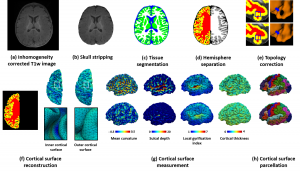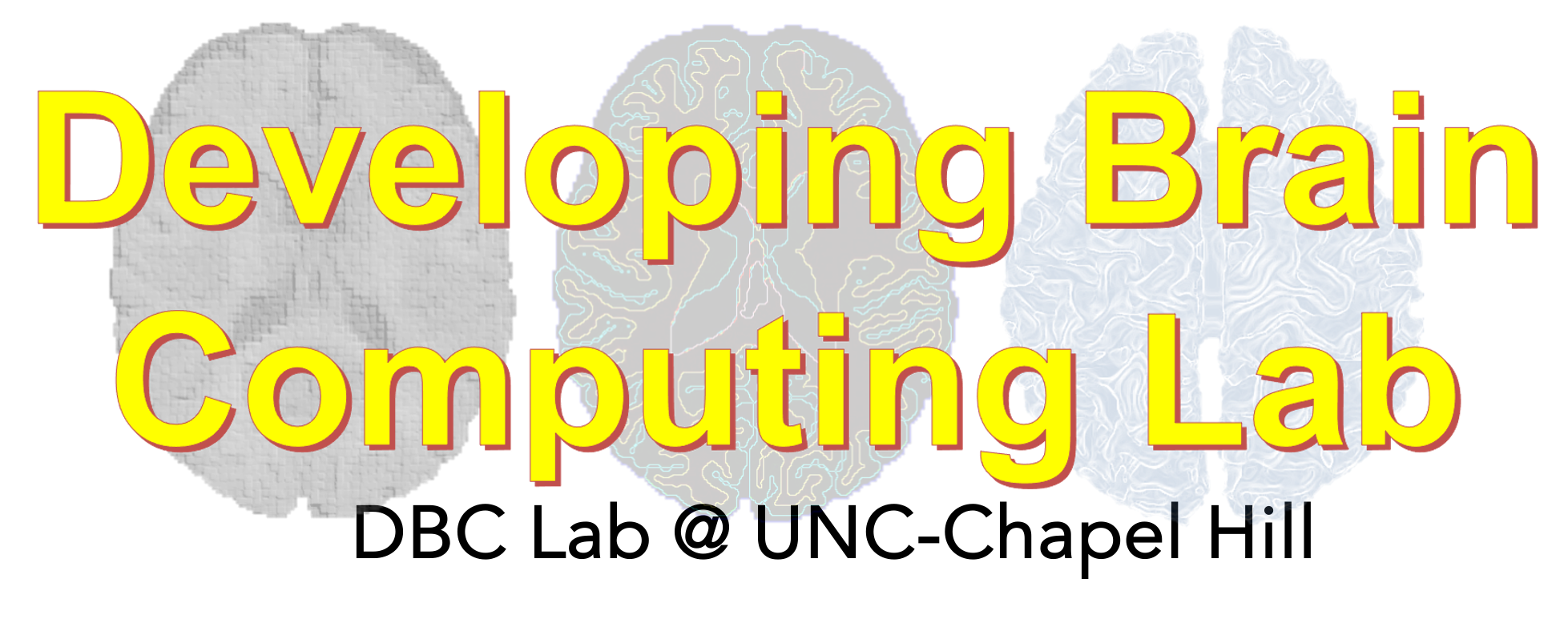Home
The Developing Brain Computing (DBC) Lab’s research mainly focuses on the development of innovative computational methods and tools for processing and analyzing medical imaging data, especially for infant brain MRI. We are focusing on infant brain processing since 2007. Currently, we have pioneered a comprehensive set of advanced infant-dedicated tools for skull stripping and tissue segmentation of infant brain MRIs. Our computational tools and discoveries on infant brain development was highlighted in the National Institute of Mental Health (NIMH)’s 2015-2020 Strategic Plan.
In 2020, a new version of iBEAT (Infant Brain Extraction and Analysis Toolbox) is now available online as iBEAT V2.0 Cloud (http://www.ibeat.cloud/), which is developed with latest advanced techniques (including deep learning). iBEAT V2.0 Cloud can handle pediatric brain images from multiple sites with various scanners and protocols. Users can process brain structural images from birth through adolescence, including images during the first postnatal years, which typically exhibit low tissue contrast and dynamic appearance and size changes. All uploaded data will be securely managed in the iBEAT V2.0 web server and will not be distributed to the public. The current functionality of iBEAT V2.0 Cloud includes: inhomogeneity correction, skull stripping, tissue segmentation, left/right hemisphere separation, topology correction, cortical surface reconstruction, cortical surface measurement, and cortical surface parcellation.
Up to date, we have successfully processed 30,000+ infant brain images and received numerous praise/positive feedback from 190+ institutions, including Boston Children’s Hospital/Harvard Medical School, Stanford University, Yale University, University of Maryland, University of California, University of Pennsylvania, Washington University in St. Louis, Tokyo Metropolitan University, Arkansas Children’s Research Institute, and Princeton University.

Fig. 1. Illustration of the key functionality included in the iBEAT V2.0 Cloud
